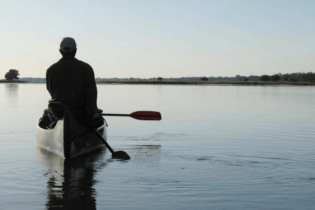Bulawayo, The Namibian Ports Authority says car dealers, agents and retailers can use an alternative route to bring in second hand vehicles into the country following the restrictions that were put in place by Botswana on the movement of the cars on their roads.
Speaking at Namport’s stand at the Zimbabwe International Trade Fair, Public Relations Assistant Cliff Shikuambi said dealers could use the Trans-Caprivi route which, although it was longer than the trans-Kalahari route which passes through Botswana, would not require them to hire carriers. The route goes via Zambia into Livingstone from where it then goes into Zimbabwe. “Dealers have not been able to understand that it is not our fault they cannot drive their cars through Botswana but we have been able to talk to them and explain what is happening. We are happy to say that most have left our stand with the knowledge that they can use the Trans-Caprivi route to bring in their vehicle,” he added. In March, Botswana announced that it had banned second hand cars with more than five years in use on its roads and this had adversely affected car dealers and other individuals who import vehicles from Europe via Walvis Bay in Namibia who would then have to load them on carriers.Some Zimbabwean dealers have been driving the vehicles through Botswana to the Plumtree border post to minimise costs but hiring carriers from the port through Botswana will however cost between $1 000 and $1 500 more, depending on the type and size of the vehicle.
The move is also likely to affect hundreds of Zimbabweans who had found easy employment by driving the vehicles from Walvis Bay at fees ranging between $250 and $300 for the trip. Shikuambi said dealers would however need to get the necessary quotations so that they could know how much it would cost them to use the route and then be able to decide if they would prefer to use it or hire the carrier. “This alternative route gives dealers a choice. Instead of being forced to hire a carrier, they can now choose how they want to get their vehicles into the country,” he said.He noted that Zimbabwe was the biggest importer of second hand vehicles that came through the port of Walvis Bay taking up 1000 cars every month which is 75 percent of all the cars that come through the port. Shikuambi reiterated the importance of the completion of the Dry port facility at Walvis Bay so that Zimbabwe’s trade avenues could become easier.
Currently Zimbabwe is using Walvis Bay, Cape Town, Durban and Beira ports to bring in goods but once the dry port is completed all goods would be coming in through Walvis Bay making it cheaper and more convenient.
Significant growth has been experienced on the Walvis Bay Corridors for imports to Zimbabwe. Consignments being transported through this corridor include frozen chicken, furniture, equipment, vehicles and other consumables. The need for landlocked countries to gain access through an alternative trade route to and from sea is imperative, benefitting from access to the Port of Walvis Bay, which offers importers, and exporters reduced time and cost savings, high reliability, and cargo security.







